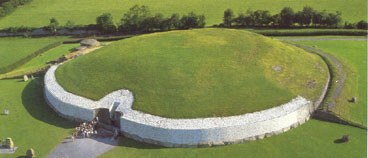TEPUI´s vision of creating ´Sustainability Partnerships with Nature´ is based on the belief that we have to work together with nature in order to address contemporary environmental problems we are facing.This is the reason that we want to promote Living Technologies, a mix of timeless biological processes and current innovations inspired by nature´s technologies, as solutions to environmental repair and restoration.
This vision is closely connected to and inspired by the principles of Biomimicry and Life Cycle Development (LCD), innovative approaches for designing systems based on biological methods and systems found in nature. Biomimicry is a rapidly developing discipline that finds inspiration in the startling solutions that natural organisms have evolved over the course of the last 3.8 billion year. This discipline studies nature’s best ideas and then imitates these designs and processes providing many of the solutions that we will need during the sustainability revolution: super-efficient structures, high strength bio-degradable composites, self-cleaning surfaces, zero waste systems, low energy ways of creating fresh water and many others. Biomimetic systems are closed-loop life cycles, where outputs and by-products become inputs for something else; as the Cradle to Cradle theory puts it, it's where "waste equals food".
LCD is a method of developing closed product material flows through the design of eco-effective products. Open material flows are seen as deficits that need material, process or information flow optimisation.
How do these three disciplines, living technologies, Biomimicry and LCD, relate?
Biomimetic systems and Living Technologies are closed-loop life cycles, where outputs and by-products become inputs for something else, so generally it could be said that closed life-cycles are the overall philosophy when it comes to the development of any kind of eco-effective model, product or technology.
Not all biomimetic systems are per definition living technologies and vice versa, although their aim is very similar: to provide solutions to environmental problems which are inspired by nature´s technologies. Bio-utilisation, bio-assistance and biomimicry are all different ways of using biology. Bio-utilisation is using parts of organisms as raw materials, this includes a house made of wood, but also a cancer drug made from horseshoe crab blood. Bio-assistance is the domestication of organisms, anything from herding sheep to using algae to make hydrogen for fuel cells. These strategies can also be used for green design, and are sometimes used in combination. For example, a well-known living technology, a Living Machine sewage treatment system uses live plants and microbes (bio-assistance) which are selected and arranged to imitate a natural ecosystem (biomimicry). Living Machines are not only more environmentally friendly than standard methods of sewage treatment, they turn what is normally an unpleasant burden for society into a vibrant greenhouse.
Feel inspired? Find out more:
Living Technologies,
Sex, Velcro and Biomimicry with Janine Benyus, Waste = Food

 I am reading my "newest favourite" book just now, the sort of book I can't wait to open at breakfast, and which keeps me at my coffee longer than usual. It's Heather Kinkade-Levario's
"Design for Water: Rainwater Harvesting, Stormwater Catchment and Alternate Water Reuse".
I am reading my "newest favourite" book just now, the sort of book I can't wait to open at breakfast, and which keeps me at my coffee longer than usual. It's Heather Kinkade-Levario's
"Design for Water: Rainwater Harvesting, Stormwater Catchment and Alternate Water Reuse".


